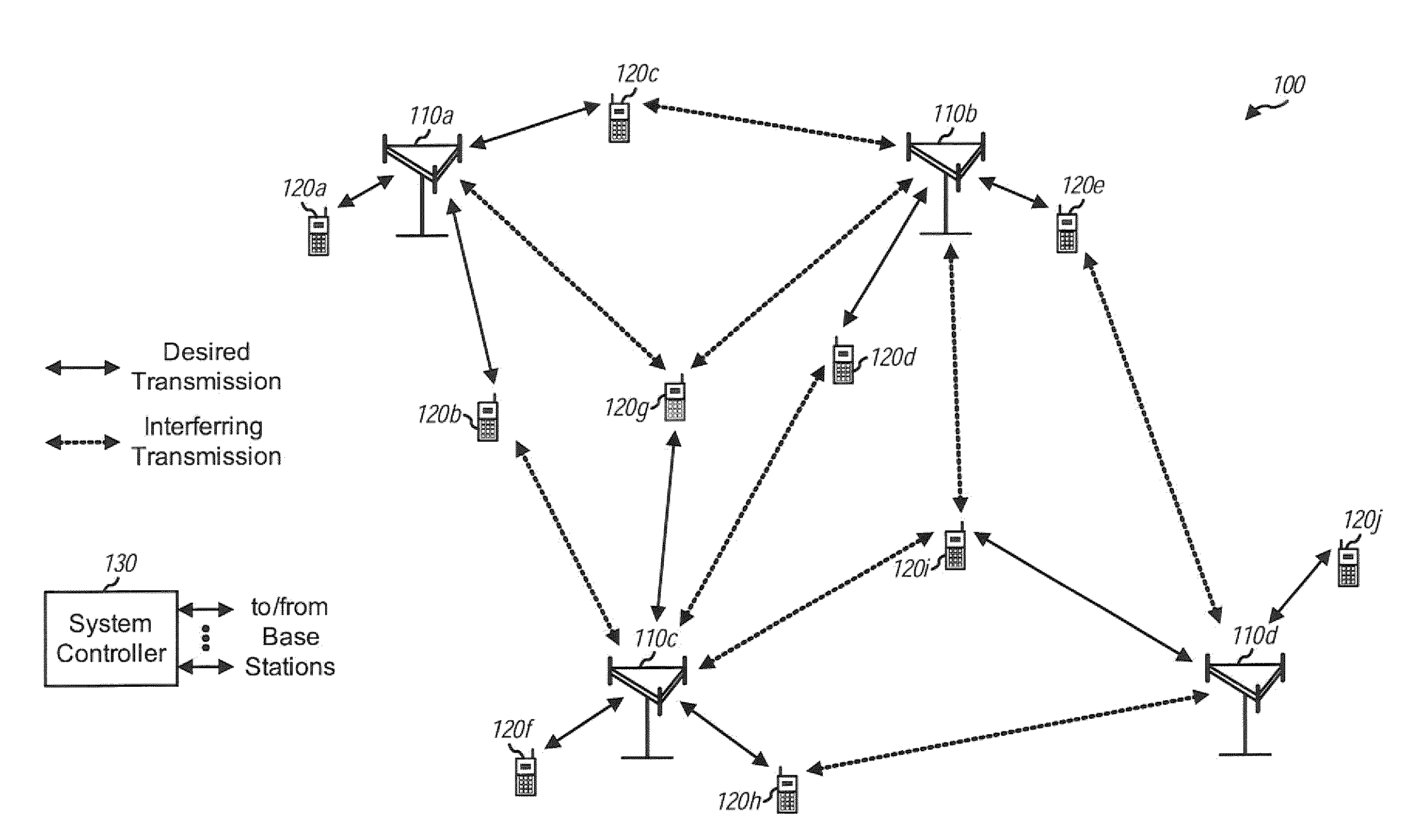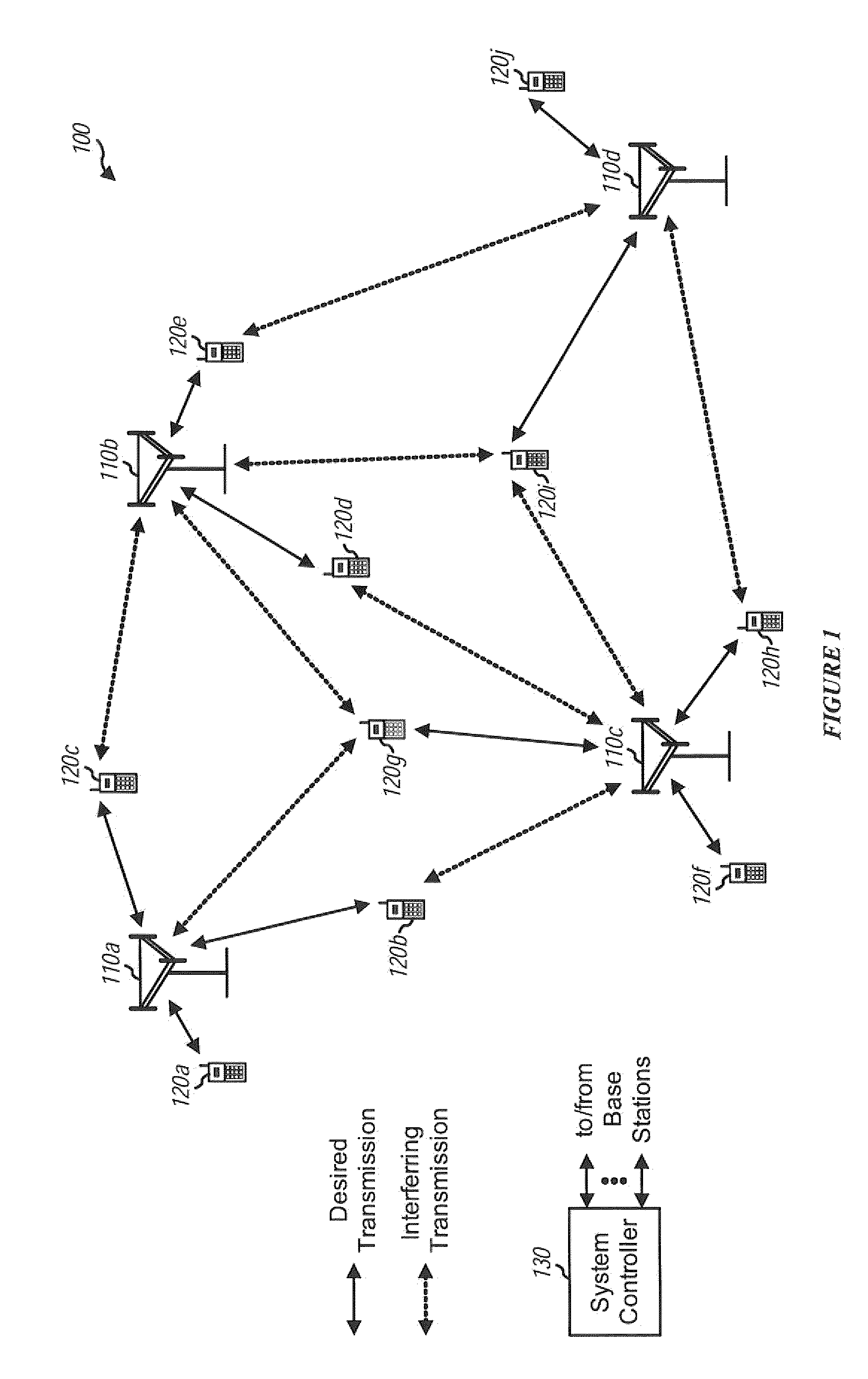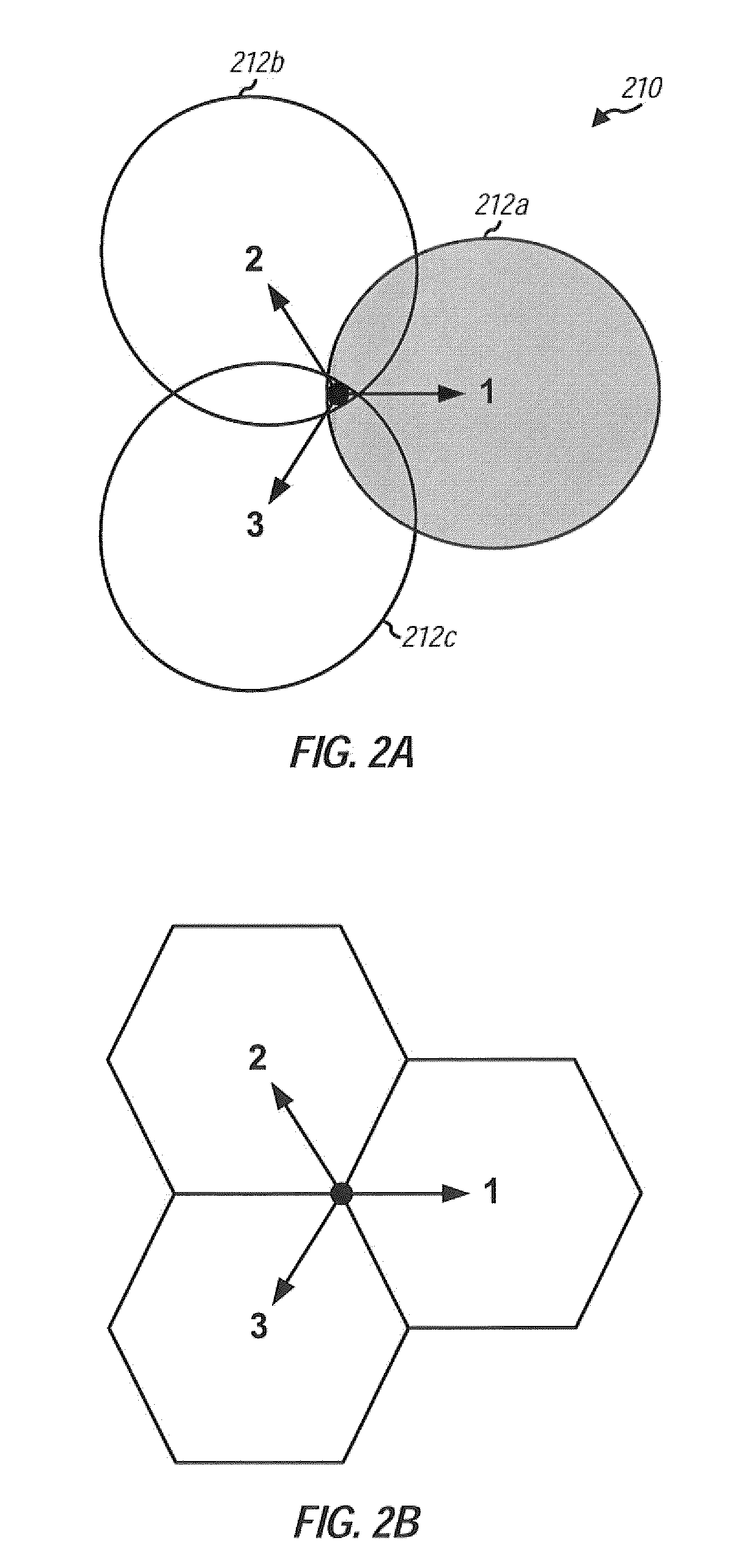Feedback to support restrictive reuse
- Summary
- Abstract
- Description
- Claims
- Application Information
AI Technical Summary
Benefits of technology
Problems solved by technology
Method used
Image
Examples
Embodiment Construction
[0039]The word “exemplary” is used herein to mean “serving as an example, instance, or illustration.” Any embodiment or design described herein as “exemplary” is not necessarily to be construed as preferred or advantageous over other embodiments or designs.
[0040]Techniques to efficiently avoid or reduce interference from strong interferers in a wireless communication system are described herein. A strong interferer to a given user u may be a base station (on the forward link) or another user (on the reverse link). User u may also be a strong interferer to other users. A strong interference entity for user u may be a strong interferer causing high interference to user u and / or a strong interferee observing high interference from or due to user u. Strong interference entities (or interferers / interferees, or simply, interferers / ees) for each user may be identified as described below. Users are allocated system resources (e.g., frequency subbands) that are orthogonal to those used by th...
PUM
 Login to View More
Login to View More Abstract
Description
Claims
Application Information
 Login to View More
Login to View More - R&D
- Intellectual Property
- Life Sciences
- Materials
- Tech Scout
- Unparalleled Data Quality
- Higher Quality Content
- 60% Fewer Hallucinations
Browse by: Latest US Patents, China's latest patents, Technical Efficacy Thesaurus, Application Domain, Technology Topic, Popular Technical Reports.
© 2025 PatSnap. All rights reserved.Legal|Privacy policy|Modern Slavery Act Transparency Statement|Sitemap|About US| Contact US: help@patsnap.com



